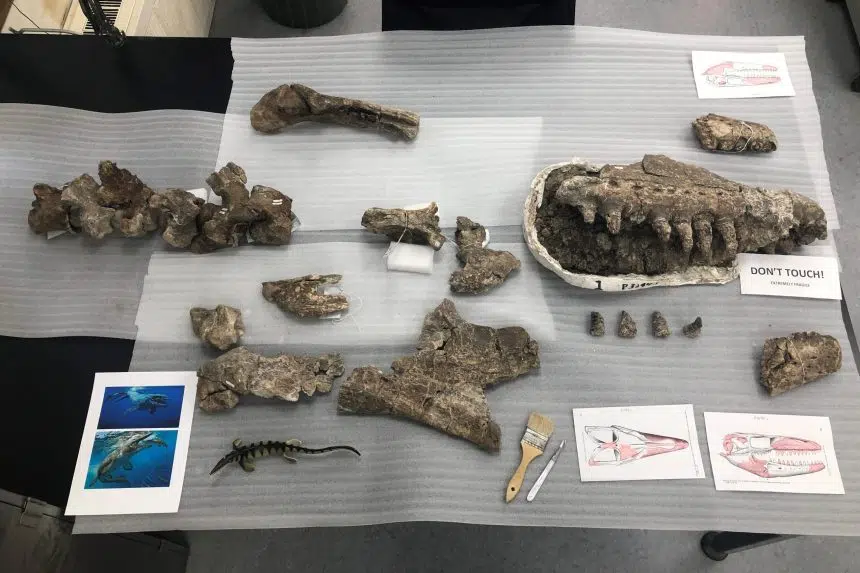A so-called “T. rex of the sea” is being dusted off at the Royal Saskatchewan Museum.
A Prognathodon fossil that was found in southwest Saskatchewan is being examined in the lab at the museum in Regina.
The Prognathodon — known as the T. rex of the sea because of their massive skulls and teeth — was a mosasaur. The Prognathodon is related to the RSM’s Tylosaurus specimen.
So far, museum staff have collected the majority of the skull, most of the neck, and a few bones from the skeleton.
“It appears as though this specimen had a skull approximately 130 centimetres in length, compared to the three known specimens collected in Alberta, which are roughly 80 to 90 centimetres in length,” said a media release from the museum.
The fossil initially was found by an area resident in Grasslands National Park in 2012. Parks Canada and RSM staff visited the site in November 2012 and collected small fragments of the skull. More material was collected in 2013.
The museum got a permit in 2019 to dig at the site and recovered more material. Parks Canada staff, RSM palaeontologists and graduate students were back at the site this past September to expand the dig.
According to the museum, Prognathodon lived in the Western Interior Seaway, which was a shallow continental sea that extended from the Gulf of Mexico to the Arctic Ocean about 75 million years ago.
“We were pleasantly surprised to find most of the front of the skull was preserved, and additional bones are running into the hillside,” RSM palaeontologist Dr. Ryan McKellar said in the release.
“This new find is going to add another incredible piece to the Saskatchewan’s provincial collection held at the RSM and we want to thank Parks Canada for their assistance in this amazing discovery.”
The museum hopes to recover more of the skeleton next summer. The fossil is to be kept at the RSM and is expected to be part of new fossil exhibits planned for the museum in three or four years.












